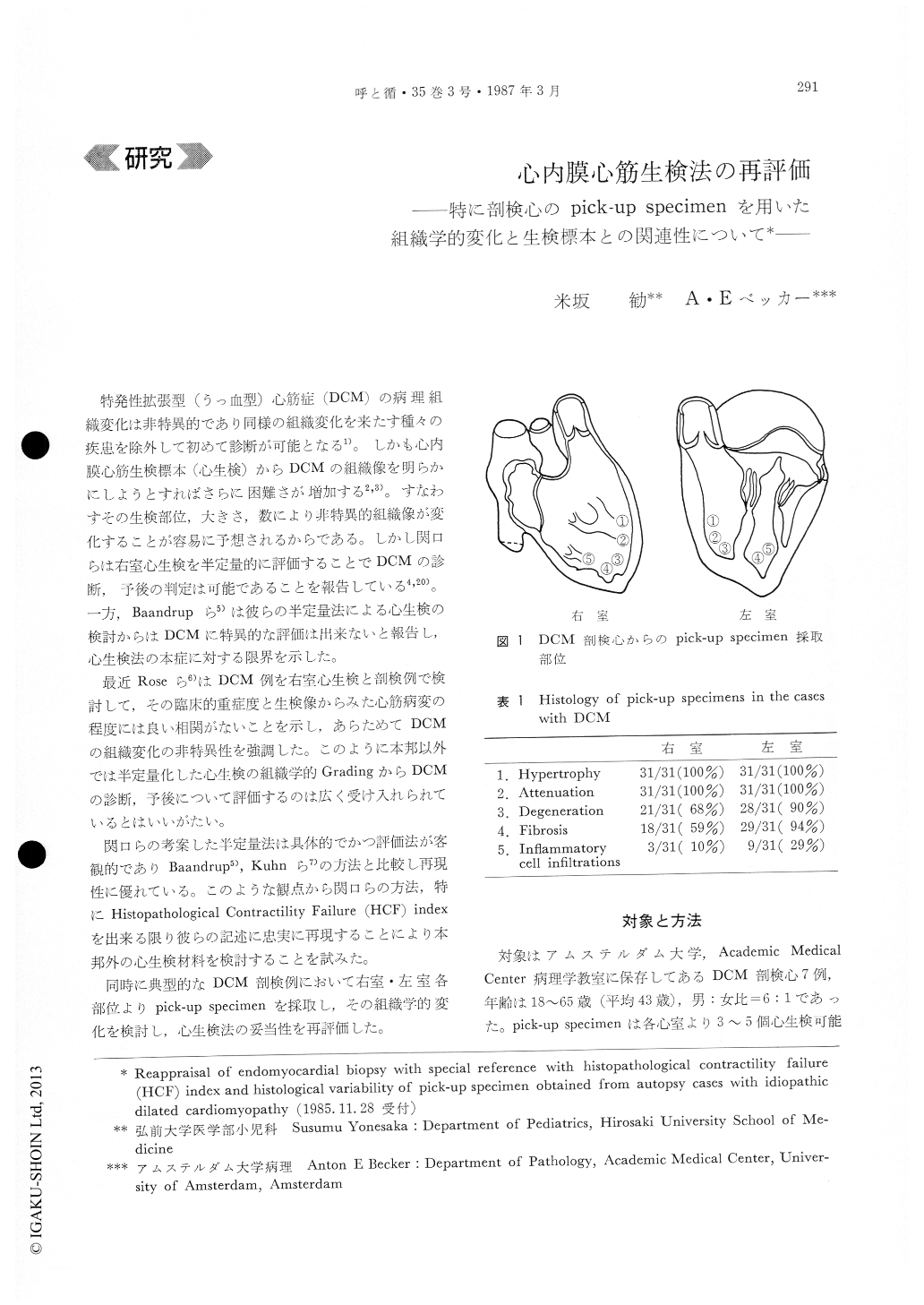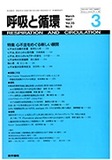Japanese
English
- 有料閲覧
- Abstract 文献概要
- 1ページ目 Look Inside
特発性拡張型(うっ血型)心筋症(DCM)の病理組織変化は非特異的であり同様の組織変化を来たす種々の疾患を除外して初めて診断が可能となる1)。しかも心内膜心筋生検標本(心生検)からDCMの組織像を明らかにしようとすればさらに困難さが増加する2,3)。すなわすその生検部位,大きさ,数により非特異的組織像が変化することが容易に予想されるからである。しかし関口らは右室心生検を半定量的に評価することでDCMの診断,予後の判定は可能であることを報告している4,20)。一方,Baandrupら5)は彼らの半定量法による心生検の検討からはDCMに特異的な評価は出来ないと報告し,心生検法の本症に対する限界を示した。
最近Roseら6)はDCM例を右室心生検と剖検例で検討して,その臨床的重症度と生検像からみた心筋病変の程度には良い相関がないことを示し,あらためてDCMの組織変化の非特異性を強調した。このように本邦以外では半定量化した心生検の組織学的GradingからDCMの診断,予後について評価するのは広く受け入れられているとはいいがたい。
Histopathological confirmation of the clinical diagnosis of idiopathic dilated (congestive) cardiomyopathy is notoriously difficult. This applies to the study of postmor-tem specimens and in particular to the evaluation of endomyocardial biopsies. The histopathological findings may vary considerably and nonspecific indeed, hence, many investigators outside Japan have expressed the opinion that the endomyocardial biopsy is of little diagnostic value other than excluding overt diseases. In Japan, however, the endomyocardial biopsy is now widely used and its value in the diagnosis and assessment of myocardial function of heart muscle has been accept-ed.
Since we are unware of any reports that support this statement from outside Japan we have evaluated our endomyocardial biopsies using the criteria set by Sekiguchi. The results are rather disappointing since histological assessment did not allow a clear and unam-biguous differentiation amongst the various clinical subgroups particularly on an individual patient basis. The HCF index was markedly higher in patients with idiopathic dilated cardiomyopathy than in those suffering from idiopathic hypertrophic cardiomyopathy, however, patients suffering from arrhythmias, valvular heart dise-ase, ischemic heart disease and hypertensive heart disease presented the HCF index in the range of that found in dilated cardiomyopathy. And our studies using pick-up specimen in the postmortem cases with idiopathic dilated cardiomyopathy showed that endomyocardial biopsies from several sites, both in the left and right ventricular wall, may give marked changes in the detailed histology and, hence, its interpretation in patho-logical setting.
From our studies we suggest that the HCF index reflects cardiac muscle damage, not necessarily specific for idiopathic dilated cardiomyopathy.

Copyright © 1987, Igaku-Shoin Ltd. All rights reserved.


